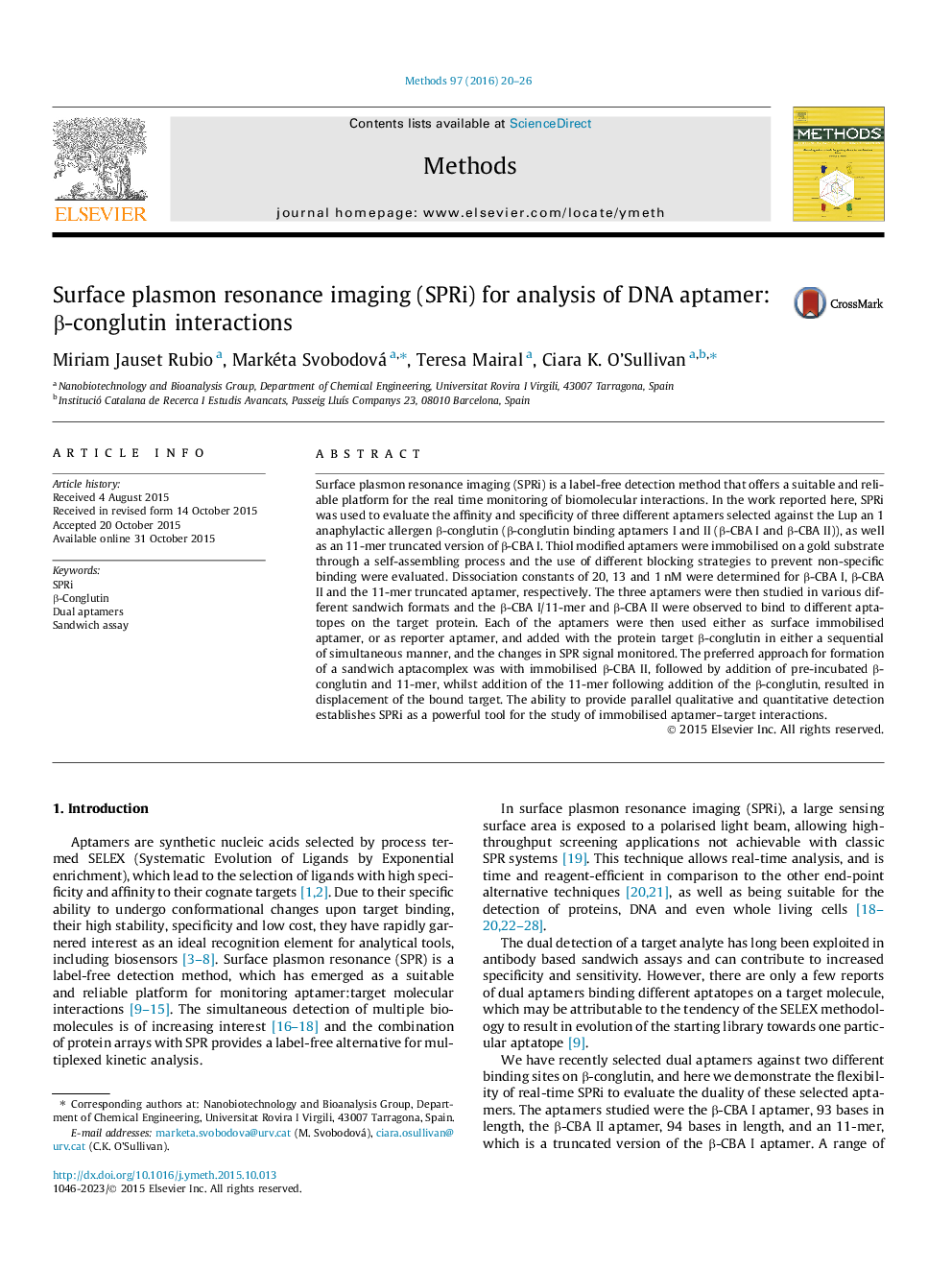| Article ID | Journal | Published Year | Pages | File Type |
|---|---|---|---|---|
| 1993189 | Methods | 2016 | 7 Pages |
Surface plasmon resonance imaging (SPRi) is a label-free detection method that offers a suitable and reliable platform for the real time monitoring of biomolecular interactions. In the work reported here, SPRi was used to evaluate the affinity and specificity of three different aptamers selected against the Lup an 1 anaphylactic allergen β-conglutin (β-conglutin binding aptamers I and II (β-CBA I and β-CBA II)), as well as an 11-mer truncated version of β-CBA I. Thiol modified aptamers were immobilised on a gold substrate through a self-assembling process and the use of different blocking strategies to prevent non-specific binding were evaluated. Dissociation constants of 20, 13 and 1 nM were determined for β-CBA I, β-CBA II and the 11-mer truncated aptamer, respectively. The three aptamers were then studied in various different sandwich formats and the β-CBA I/11-mer and β-CBA II were observed to bind to different aptatopes on the target protein. Each of the aptamers were then used either as surface immobilised aptamer, or as reporter aptamer, and added with the protein target β-conglutin in either a sequential of simultaneous manner, and the changes in SPR signal monitored. The preferred approach for formation of a sandwich aptacomplex was with immobilised β-CBA II, followed by addition of pre-incubated β-conglutin and 11-mer, whilst addition of the 11-mer following addition of the β-conglutin, resulted in displacement of the bound target. The ability to provide parallel qualitative and quantitative detection establishes SPRi as a powerful tool for the study of immobilised aptamer–target interactions.
